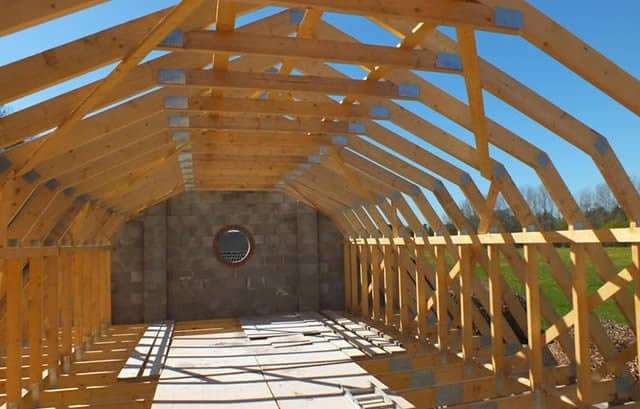When it comes to building a solid roof, roof trusses are key. These triangular bits are designed to distribute weight and support the roof. In this post we will look at the importance of roof trusses and how they contribute to the overall stability and longevity of a building.
Roof trusses are pre-made triangular structures made of wood or metal that support the roof of a building. They are made up of a series of connected beams and joists that form a rigid frame. This frame is then covered with roofing material to create a solid roof.
Types of Roof Trusses
There are several types of roof trusses, each with its own design and purpose. Here are the most common:
King Post Truss: This is the simplest and most traditional type of truss, with a central vertical post and two angled beams off it.
Queen Post Truss: Same as king post truss but with two vertical posts instead of one.
Scissor Truss: Two angled beams that cross each other in the middle to form a “V” shape.
Mono Truss: A single sloping truss used in modern architecture.
Raised Heel Truss: A truss with a raised heel for more insulation and ventilation in the attic space.
Roof Truss Bracing Diagram
A roof truss bracing diagram is a visual representation of how the trusses are connected and supported. It shows the beams and joists and any additional bracing or support. This diagram is crucial to ensure the trusses are installed correctly and can take the weight of the roof.
Now we know what roof trusses are, let’s look at why they are so important in a building.
Structural Support
The main job of roof trusses is to support the roof. By distributing the weight of the roof evenly, trusses stop any one area from taking too much weight which can cause sagging or collapse. This is especially important in areas with heavy snowfall as trusses can take the weight of the snow better than traditional rafters.
Cost-Effective
Roof trusses are pre-made off-site which means they can be made quickly and efficiently. This saves time and labour costs. Also because trusses distribute weight evenly they require less material than traditional rafters so they are a cost effective option for roof construction.
Versatility
Roof trusses are very versatile and can be designed to fit any roof shape and size. They are suitable for all types of buildings from residential homes to commercial buildings. Trusses can also be customized to fit unique architectural features such as skylights or vaulted ceilings.
Easy Installation
Roof trusses are pre-made so they are easy to install. This saves time and reduces the chance of mistakes during installation. Trusses are also lightweight so easier to handle and install than traditional rafters.
Durability
Roof trusses are strong and durable and can take heavy loads and extreme weather. They are also less prone to warping, cracking or rotting so a long lasting option for roof construction.

Roof truss brackets are metal connectors that join the various parts of the truss together. These brackets are crucial for the stability and strength of the truss. They come in different shapes and sizes depending on the type of truss and the building.
Types of Roof Truss Brackets
Gusset Plates: Flat metal plates that connect two or more beams or joists.
Hurricane Ties: Brackets that secure the truss to the wall plate for extra support and stability.
Angle Brackets: These brackets connect the top chord of the truss to the wall plate.
Skew Plates: Angled brackets that connect two trusses at a non-perpendicular angle.
To maintain the life and performance of roof trusses you must maintain them. Here are a few tips to maintain your roof trusses:
Inspect the trusses regularly for any damage such as cracks, warping or rotting.
Keep the trusses clean and clear of debris to prevent damage.
Make sure the trusses are braced and supported to prevent movement.
If you find any issues get a professional to fix or replace.
Roof trusses are a vital part of any building, providing structure, cost effectiveness, versatility and durability. With installation and maintenance right roof trusses can give you a strong and stable roof for years to come. Next time you look up at a roof remember those triangular bits that make it all happen.